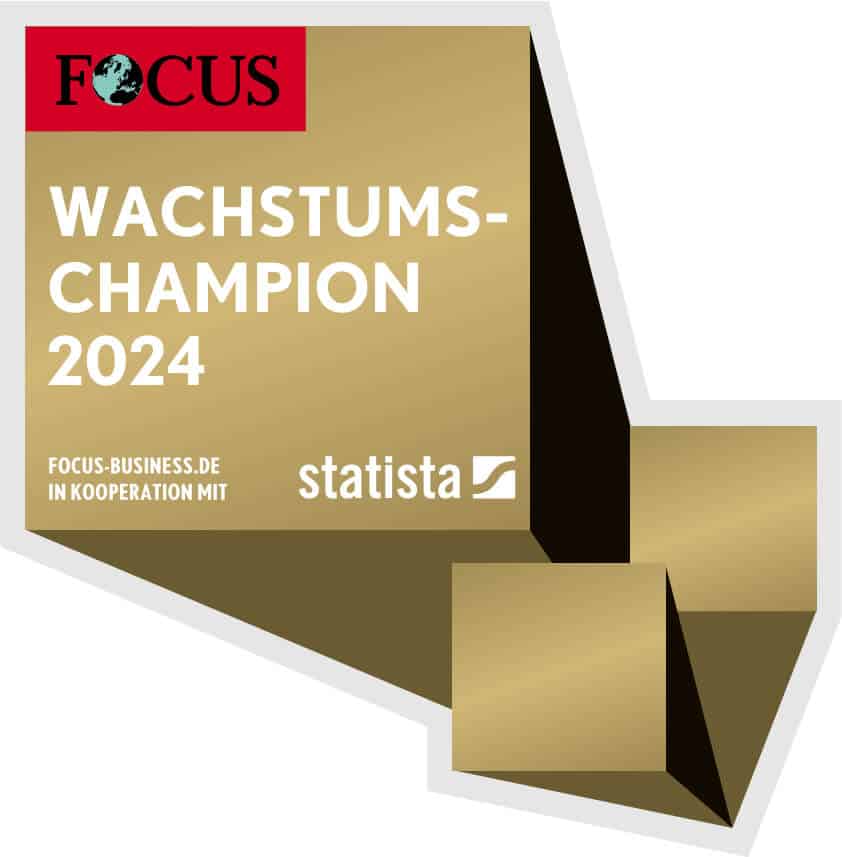Every year, new buzzwords are created for the major computer and industry trade fairs. System providers diligently try to sell new or even existing IT systems as if their (existing) offering were THE solution par excellence. In this way, they hope to live up to the latest hype. In recent years, it has mainly been Industry 4.0 that has captured the imagination. This year, the so-called digital twin was right at the forefront. Read on to find out what problems arise with regard to the digital twin and how you can solve them in your company.
Where the digital twin is heading
The topic of Digital Twin became tangible at this year's trade fairs. There are two primary objectives here: on the one hand, it is about the possibility of fully automated production, efficiency as well as Individualization and quality of the variants and specifically supports and promotes them. On the other hand, the full potential is to be exploited by ensuring that other aspects of the technology also learn from the digital twin concept.
The digital twin as a virtual image of a real product: this topic always aroused my curiosity, as it was not entirely new to me. A good decade ago, I had already supported a car manufacturer in the computer-aided geometric validation of the largest possible number of variants. At that time, these digital twins could already be driven into the wall (i.e. put to the test in crash tests).
As I didn't attend Cebit or the Hannover Messe this year, I started researching what the manufacturers had presented after the trade fairs. I quickly realized that the understanding of the digital twin was usually relatively different. Some wanted to use the digital twin primarily in development, others during the production process, while others focused on operation and incidents that occur.
Holistic approach brings challenges
In a contribution Siemens, for example, wrote the following about the Hannover Messe:
The Digital Enterprise Suite offers the manufacturing industry end-to-end software and hardware solutions that can be used to seamlessly integrate and digitalize the entire value chain, including suppliers. The result is a digital twin that maps the product, process and production on the basis of a data model.
That sounded like an enormously comprehensive approach: manufacturing companies should map all their product-related data, i.e. master data and data from production etc., in a single software suite from a single manufacturer. The far-reaching consequences of this approach give cause for concern as to whether this can be achieved without further ado.
In the project with that car manufacturer, however, I had learned that without validity and variant configuration information, nothing works at all for a variant manufacturer in the area of virtual testing. So should all this data be stored in a PLM system? That would certainly make sense, but in 20 years of PDM/PLM (Product Data Management/Product Lifecycle Management), most companies have not even managed to implement integrated solutions for their own master data management. Where isolated solutions enable a local optimum, most companies have removed use cases from central systems and transferred them to the isolated solutions. This in turn has led to the result that the dominant use case is optimally supported, but the data is not available centrally for other use cases.
The long paths of data - and where they intersect
Following my research, I had a long chat with another experienced PLM consultant who I knew from my time at Fraunhofer IAO in the 1990s and who had been working on Industry 4.0 for some time. During this intensive brainstorming session, we came to the conclusion that the digital twin can only be the totality of all product-related data that is generated in a company and, if necessary, with the help of the supplier companies. However, it must be made clear that this process goes through several phases and storage locations:
In the early phase, data is located in one or possibly even different PDM or management systems. Some of the data remains in the authoring systems. Later, the data is transferred to an ERP system and enriched there. In turn, the so-called installed base is generated during production. In this context, this is the as-built documentation of the manufactured product. This data is then often stored again in another system. This means that this data cannot be found in a single system, but is distributed across many systems.
But can this be the solution? How can the data still be used in its entirety? The solution is very simple: if all these systems use the same product structures and IDs, it is also possible to exchange data between different systems. Data generated in production or service can be linked to the master data in this way via the common structure. This creates a cross-system data framework that can be used in its entirety - and can be referred to as a digital twin.
Mechanical engineering example: Digital Twin in use
This digital twin can then be used to implement a wide range of scenarios. For example, the machine and plant manufacturer can use a digital twin to:
- carry out static and dynamic collision investigations in order to
- to be able to secure these before the actual construction
- to ensure integration into an existing factory or plant
- save development time.
- carry out functional simulations in order to
- to be able to secure these before the actual construction
- to ensure integration into an existing factory or plant
- save development time.
- ensure the electronic functionality in order to avoid errors during commissioning.
- Sensor data from the system is transferred to the digital twin in order to
- Check error situations in operation Analyze to be able to
- check the behavior of the machine/system for software updates.
- Visualize machines and systems (static, dynamic) in order to
- use them for marketing purposes
- use them in the sales process
- to use them for training purposes.
This requires a variety of simulators and other tools that can carry out these different tests. Realistically, these tools will come from very different providers. Each of these providers will in turn create interfaces to the various source and management systems in order to access the required data.
Conclusion: Standardized handling of data makes many things possible
The digital twin is an approach that makes it possible to carry out various simulations and validations of a product on the computer. At present, the desire for a central management system for all digital product data seems (still) unrealistic. However, thanks to standardized IDs and structures, a wide range of scenarios are already technically possible today.
(Cover image: © zapp2photo | fotolia.com)


